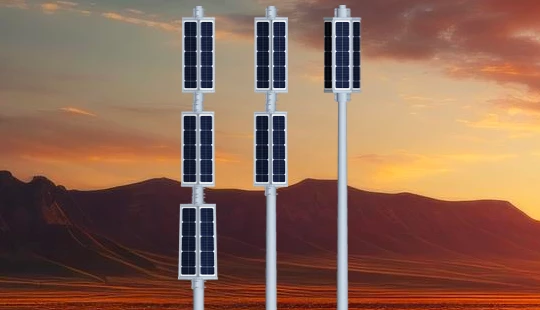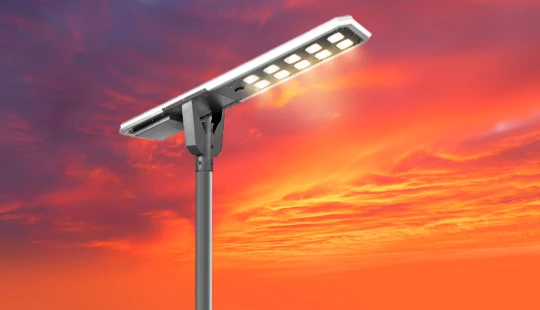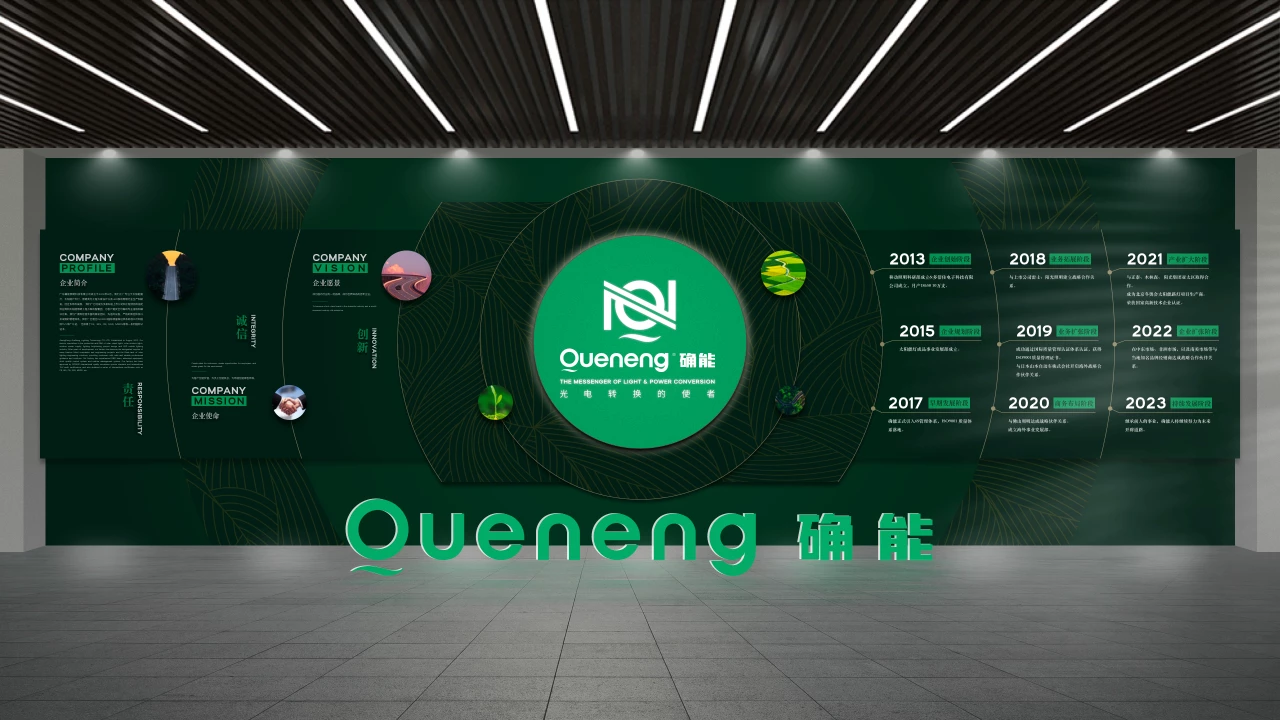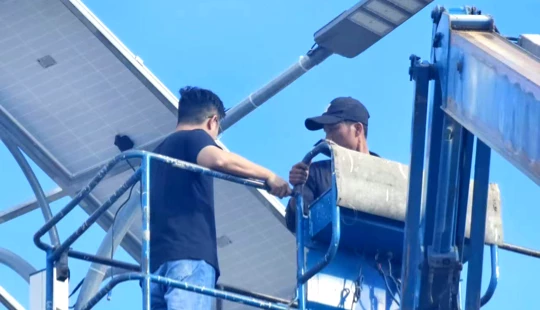difference between MPPT and PWM | Quenenglighting Expert Guide

Demystifying Solar Charge Controllers: MPPT vs. PWM for Optimal Solar Lighting Systems
In the evolving landscape of solar lighting, selecting the right charge controller is paramount for maximizing system efficiency, longevity, and overall performance. For professionals in the solar lighting industry, understanding the nuances between MPPT (Maximum Power Point Tracking) and PWM (Pulse Width Modulation) controllers isn't just about technical jargon; it's about making informed procurement decisions that impact project viability and client satisfaction. This guide delves into the core differences, helping you navigate the options for your next solar lighting deployment.
What are MPPT and PWM Solar Charge Controllers?
At their core, both MPPT and PWM controllers regulate the power flowing from your solar panels to your battery bank, preventing overcharging and optimizing the charging process. They are the brains of a standalone solar system, ensuring the battery receives a stable and appropriate charge. Without a charge controller, solar panels can overcharge batteries, leading to reduced lifespan or even damage. They also typically include features like load control and low-voltage disconnects to protect the battery from deep discharge.
How Do MPPT and PWM Differ in Their Operation?
- PWM (Pulse Width Modulation) Controllers: These are simpler, more traditional controllers. They operate by making a rapid on-off connection between the solar panel and the battery. When the battery is full, the controller stops charging. When the battery voltage drops, it reconnects. During charging, the PWM controller attempts to keep the battery voltage at a constant level (e.g., 14.4V for a 12V battery). This means the panel's voltage is effectively chopped down to the battery voltage. If your solar panel has a higher voltage (e.g., a 20V Vmp panel charging a 12V battery), the excess voltage beyond the battery's current voltage is largely wasted as heat, not converted into usable current.
- MPPT (Maximum Power Point Tracking) Controllers: These are advanced, intelligent controllers. An MPPT controller constantly tracks the solar panel's maximum power point (MPP), which is the unique voltage and current combination (Vmp and Imp) at which the panel produces its maximum power output under given conditions. It then converts this higher voltage, lower current power from the panel into a lower voltage, higher current suitable for battery charging. For example, if a 60-cell solar panel (typically 30-38V Vmp) is used to charge a 12V battery, an MPPT controller can efficiently step down that 38V to 14V for the battery, while stepping up the current proportionally. This conversion process ensures that almost all the power generated by the panel is utilized, minimizing waste.
Which Controller Offers Higher Efficiency, and Why Does It Matter?
Efficiency: This is where MPPT controllers shine.
- MPPT Controllers: Typically achieve energy conversion efficiencies of 95% to 99%. This high efficiency means that a significantly larger portion of the solar panel's potential power is converted into usable energy for battery charging.
- PWM Controllers: Generally have lower energy transfer efficiency, often ranging from 75% to 80%, as they don't convert excess voltage. The lost voltage simply isn't utilized.
Why it matters for solar lighting: Higher efficiency directly translates to more power harvested from your solar panels each day. For solar streetlights or other continuous lighting applications, this means:
- Faster Battery Charging: Batteries reach full charge quicker, especially on cloudy days.
- Extended Runtime: More stored energy allows the lights to operate longer, particularly during consecutive cloudy days or long nights.
- Reduced Panel Size/Cost: In some cases, you might be able to achieve the same desired runtime with a slightly smaller solar panel array, offsetting some of the higher initial cost of an MPPT controller.
- Improved Performance in Varying Conditions: MPPT controllers perform significantly better in cold weather (where panel voltage increases) and in situations where panels are partially shaded, as they can continuously adjust to find the optimal power point.
When Should You Choose MPPT vs. PWM for Your Solar Lighting Project?
The choice largely depends on your system's size, budget, and performance requirements.
- Choose MPPT when:
- Panel Voltage is Significantly Higher than Battery Voltage: This is a common scenario, especially with readily available grid-tie solar panels (e.g., 60-cell panels with Vmp ~30-38V) being used with 12V or 24V battery systems. MPPT can efficiently utilize this voltage difference.
- Maximizing Energy Harvest is Critical: For high-power lighting, remote locations, or systems requiring extended autonomy (e.g., multi-day cloudy weather support), MPPT's superior efficiency is invaluable.
- Larger Systems (e.g., >200W): The efficiency gains of an MPPT controller typically outweigh its higher cost in larger systems.
- Cold Climates: Solar panel voltage increases in colder temperatures. MPPT can capitalize on this higher voltage to generate more power, whereas a PWM controller would largely waste it.
- Partial Shading is a Concern: While not a complete solution, MPPT controllers are generally better at adapting to sub-optimal conditions like partial shading.
- Choose PWM when:
- Cost is the Primary Constraint: PWM controllers are significantly less expensive upfront.
- Smaller Systems (e.g., <200W): For small, basic solar path lights or accent lights with low power demands, the efficiency gain of an MPPT might not justify its added cost.
- Panel Voltage Closely Matches Battery Voltage: If you're using a 36-cell panel (Vmp ~18V) with a 12V battery, or two 36-cell panels in series for a 24V battery, the PWM controller is more efficient as there's less excess voltage to waste.
- Simplicity and Reliability are Key: PWM controllers have fewer components and are generally simpler, making them robust for very basic applications.
What Are the Cost and System Integration Considerations?
- Cost: MPPT controllers are generally 2 to 4 times more expensive than PWM controllers of comparable current ratings. For instance, a 20A PWM controller might cost $30-$50, while a 20A MPPT controller could range from $100-$200+. However, for larger systems, the increased energy harvest from an MPPT can sometimes allow for slightly smaller (and thus cheaper) solar panels, potentially offsetting some of the controller's higher cost over the system's lifetime.
- Wiring and Design:
- MPPT: Allows for higher voltage panel arrays, which means you can use thinner gauge wiring over longer distances from the solar panel to the controller, reducing voltage drop and cable costs. This is a significant advantage in many solar lighting projects where the panel might be mounted some distance from the battery/controller.
- PWM: Requires the panel voltage to be closer to the battery voltage, and longer cable runs for high currents can lead to significant voltage drops, necessitating thicker, more expensive cabling.
- Future-proofing: As solar technology advances and panel costs continue to decline, using high-voltage panels with MPPT controllers becomes increasingly attractive for flexibility and future upgrades.
Conclusion:
For solar lighting professionals, the decision between MPPT and PWM is a strategic one. While PWM offers a cost-effective solution for simpler, smaller, and budget-constrained projects where panel voltage aligns well with battery voltage, MPPT emerges as the superior choice for high-performance, larger-scale, or challenging environmental applications. Its ability to extract maximum power from solar panels translates directly into more reliable and efficient solar lighting systems, ly providing better value and performance for end-users and distinguishing your offerings in a competitive market.

Have more questions about our products or services?
The latest hot news you might like

Discover how solar panels power street lights, exploring the technology behind solar energy conversion, storage systems, and how solar-powered street lights are revolutionizing urban and rural lighting solutions.

Learn how AC Solar Hybrid Street Lights work, their advantages, disadvantages, system behavior in low-sunlight conditions, and why hybrid technology is ideal for regions with unstable sunlight.

Municipalities around the world are increasingly adopting solar-powered streetlights as part of their urban development strategies. Rising energy costs, the need for sustainable infrastructure, and government green initiatives are driving cities to switch from traditional street lighting to advanced LED solar streetlights.
Queneng Lighting provides municipalities with cost-effective, energy-efficient, and durable solar lighting solutions, ensuring safe and sustainable public spaces.
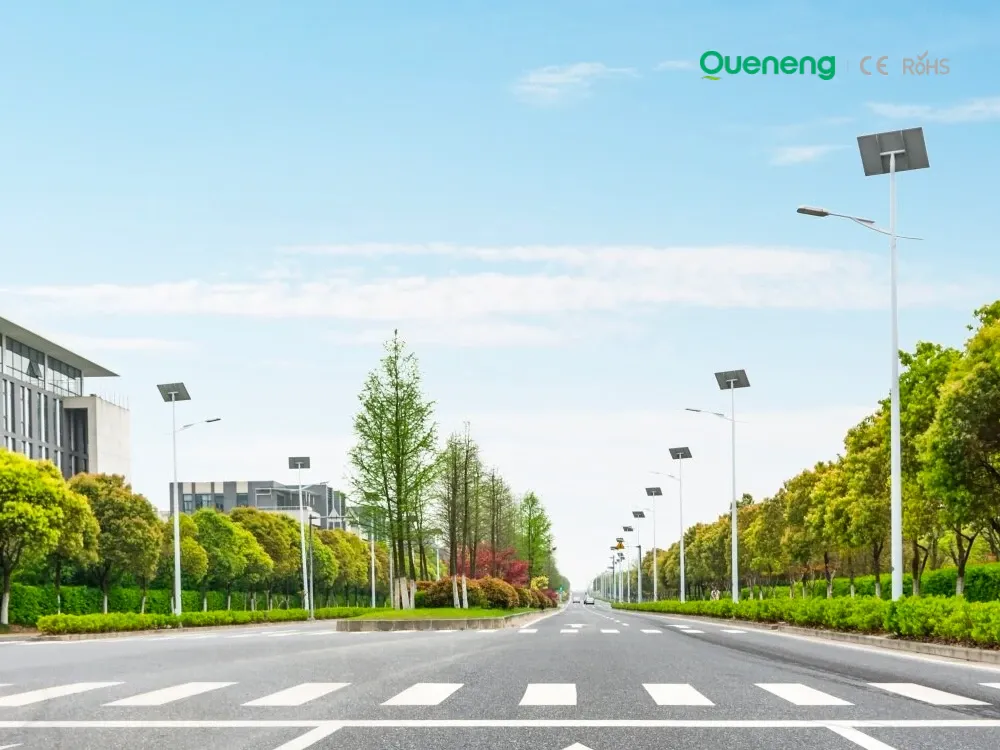
In recent years, the purchase of solar streetlights for municipalities has become a growing trend across the globe. Local governments are under pressure to reduce public expenditure, promote green energy, and create safer communities. Solar streetlights provide a reliable, cost-effective, and sustainable solution that meets these needs. Queneng Lighting, as a leading solar street lighting manufacturer, has supported multiple municipal projects worldwide with customized and energy-efficient solutions.
FAQ
Solar Street Light Luqing
How long does the solar street light last?
The lifespan of a solar street light depends on the quality of the components, but typically, the solar panels can last up to 25 years, and the LED lights last 50,000 hours or more. The battery generally lasts between 3-5 years, after which it may need to be replaced.
What are the main benefits of using Luqing solar street lights in urban areas?
In urban areas, Luqing solar street lights reduce dependency on the grid, cut down on electricity costs, and minimize environmental impact. They also offer easy installation, which reduces the need for extensive wiring and infrastructure changes.
What kind of maintenance does the solar street light require?
Solar street lights are designed for low maintenance. The primary maintenance task is to ensure the solar panels are clean and free of debris to optimize their charging efficiency. Periodic checks of the battery and LED performance may also be necessary to ensure long-term functionality.
Battery and Analysis
What conditions are best for batteries to be stored under?
Theoretically, there is always energy loss when a battery is stored. The inherent electrochemical structure of the battery determines that battery capacity will inevitably be lost, mainly due to self-discharge. Usually the size of self-discharge is related to the solubility of the cathode material in the electrolyte and its instability after heating (easy to self-decompose). Rechargeable batteries have a much higher self-discharge than primary batteries.
Battery Types and Applications
What type of batteries can be used in remote controls?
In principle, recharged secondary batteries can also be used, but when actually used in remote control devices, secondary batteries have a high self-discharge rate and need to be charged repeatedly, so this type of battery is not practical.
Solar Street Light Luhua
What makes Luhua solar street lights energy-saving and eco-friendly?
Luhua solar street lights are energy-efficient because they use solar power, a renewable energy source, to generate electricity, reducing reliance on the grid. The LED lights consume very little energy while providing high brightness. The eco-friendly design helps reduce carbon emissions and lower electricity costs, making them a sustainable and green solution for outdoor lighting.


Queneng's Luzhou Solar Street Light provides sustainable, energy-efficient outdoor LED lighting. Powered by solar energy, it's a cost-effective and eco-friendly solution for illuminating streets and pathways. A reliable and durable LED solar street light.

Queneng’s Solar Street Lights are designed to provide reliable, energy-efficient lighting for streets, parks, and other outdoor spaces.

Experience reliable outdoor illumination with our smart solar street light, a perfect combination of advanced technology and eco-conscious design.

Queneng's Luqiu Innovative Solar Street Light offers energy-saving, durable outdoor lighting. This solar power street light provides a reliable and eco-friendly solution for illuminating your streets and pathways.

Queneng's Luxian Reliable Solar Street Light offers energy-saving LED lighting for outdoor use. This durable, solar-powered street light provides reliable illumination, reducing energy costs and environmental impact. A perfect solution for sustainable outdoor lighting.
If you would like more information about Queneng solar lighting solutions, please send us a message by filling out the form below. Our professional team will get back to you within 24 hours!
Rest assured that your privacy is important to us, and all information provided will be handled with the utmost confidentiality.
Schedule a Meeting

Book a date and time that is convenient for you and conduct the session in advance.
Have more questions about our products or services?

